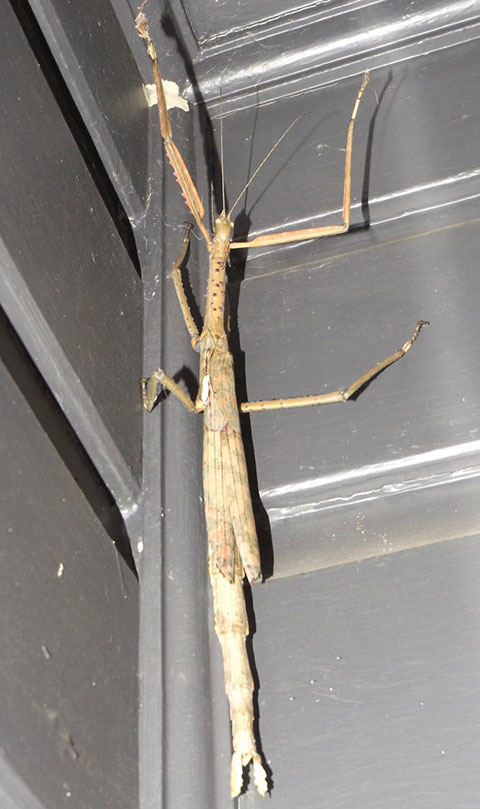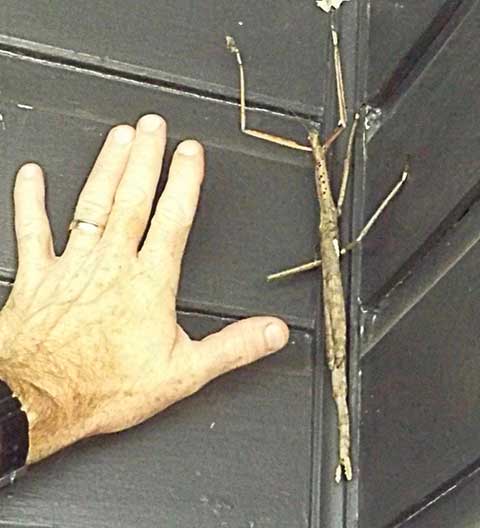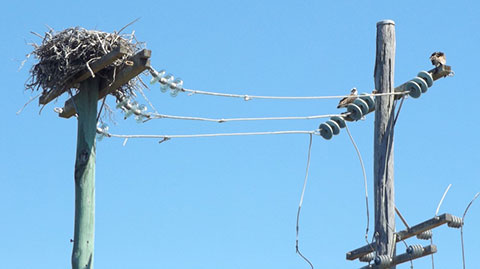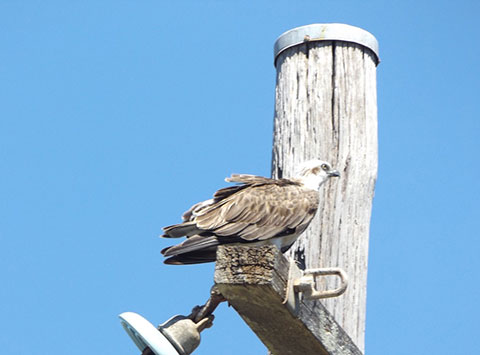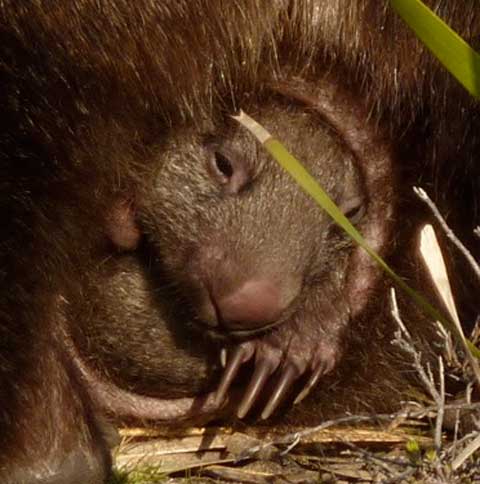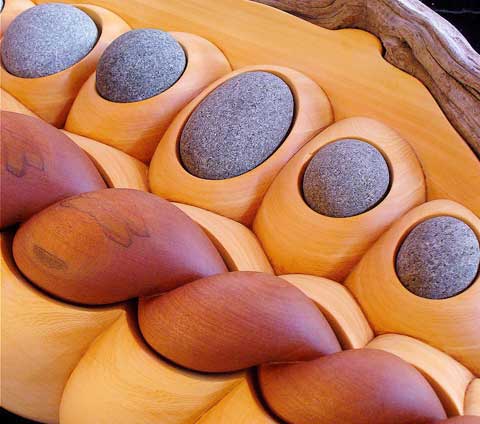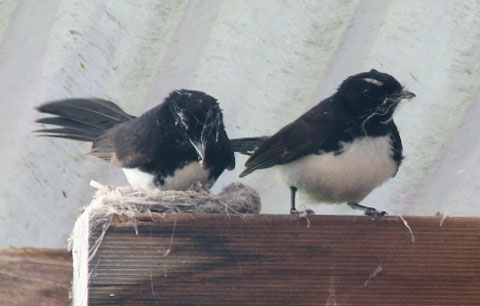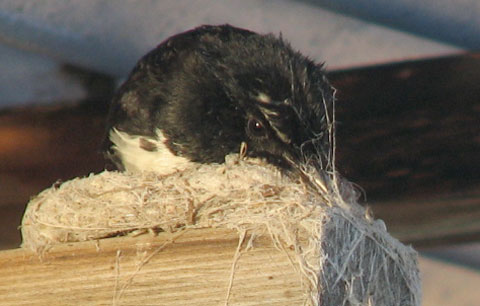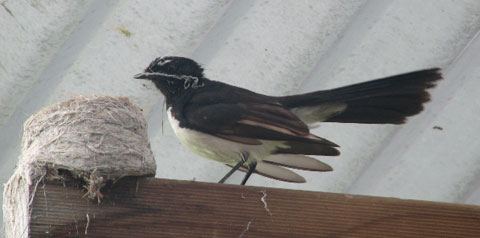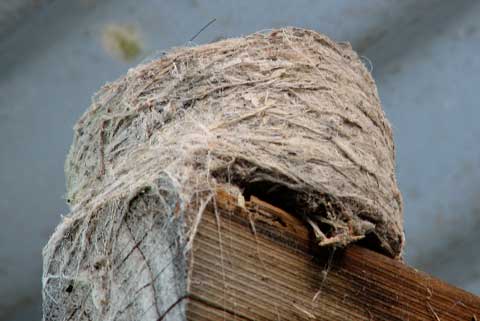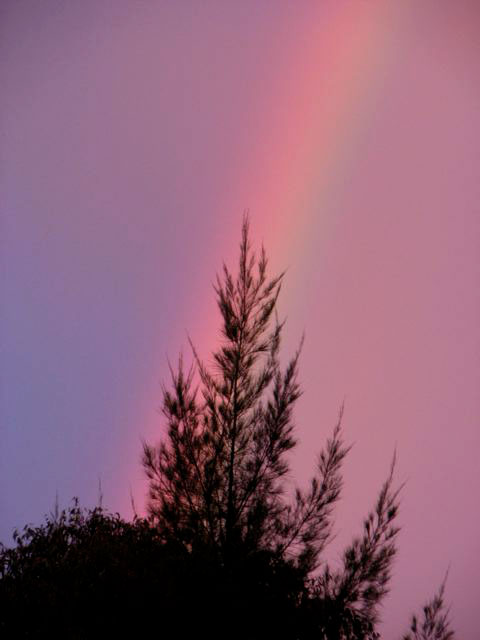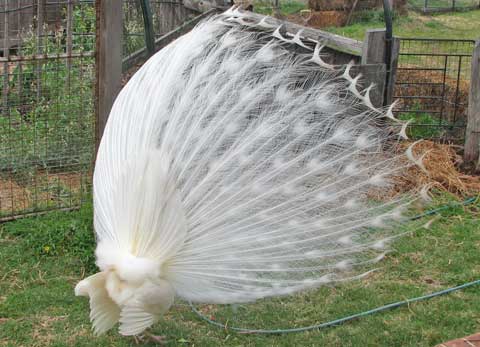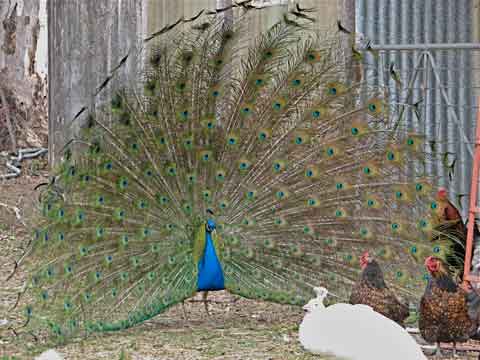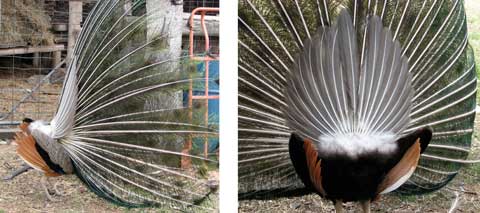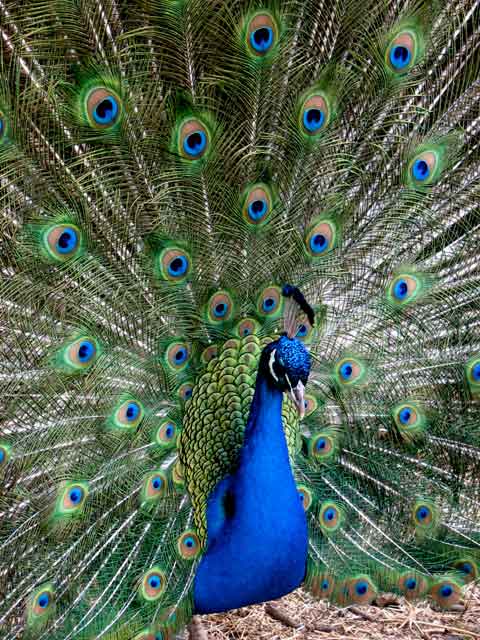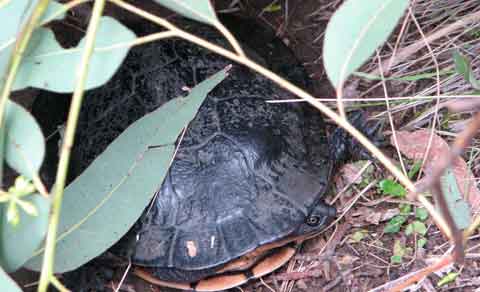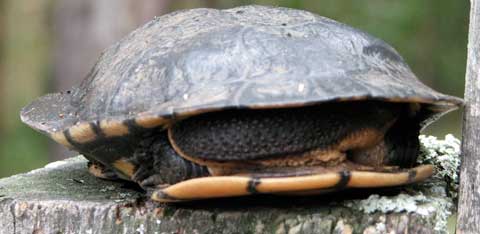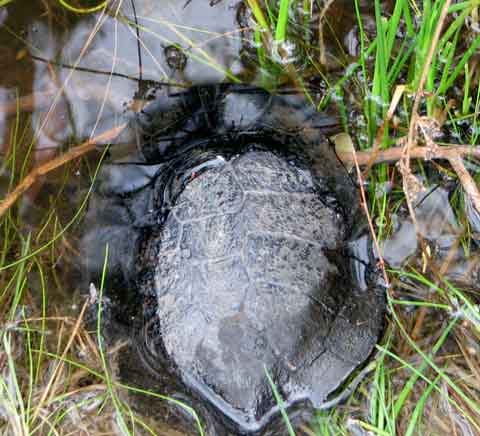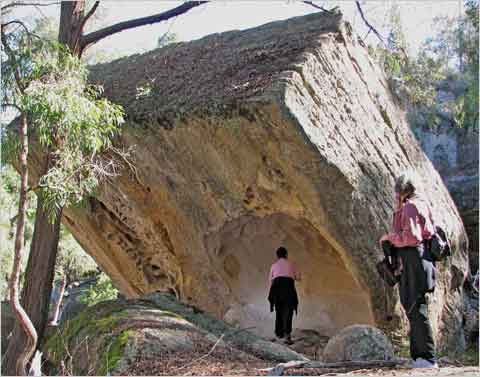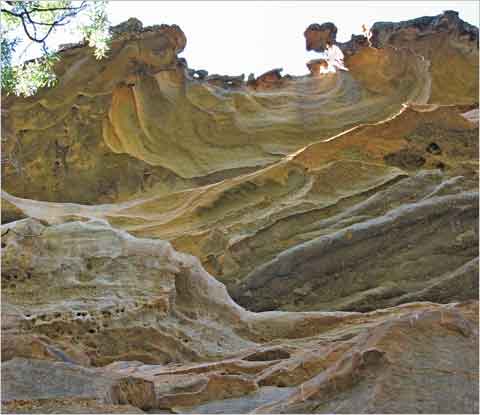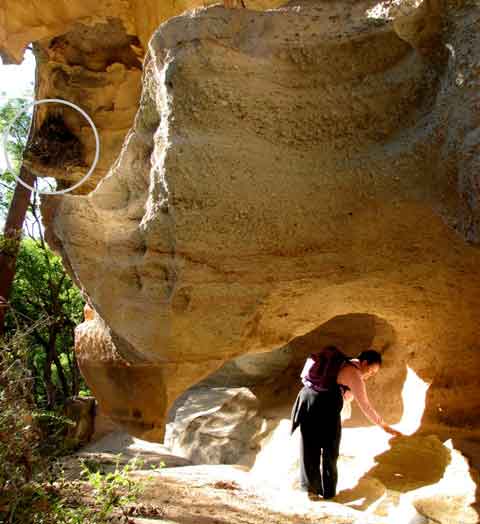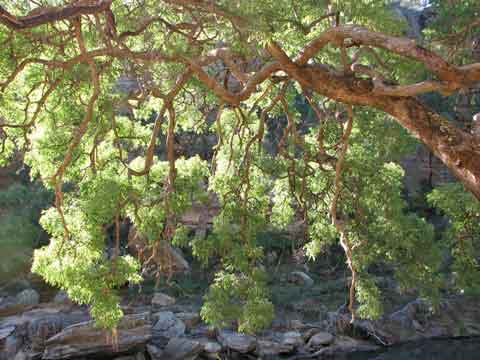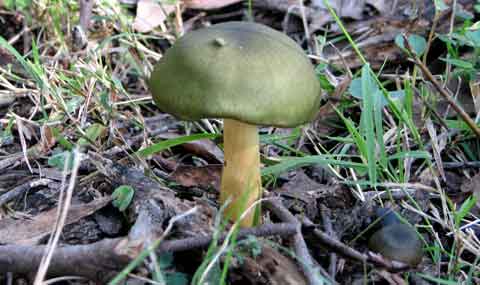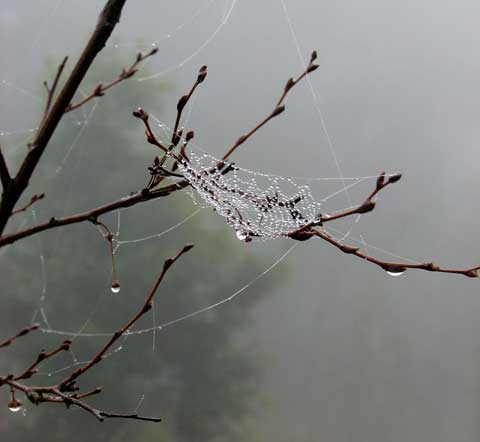Down here in my skybowl I have had isolated visits from birds I don’t usually see – just dropping in for a peek at how we poor groundhuggers live.
But I have never had a Wedge-tailed Eagle come calling at the house.
Last week this one flew into my yard and landed in a very large and spreading stringybark tree, just up the hill. The photo was taken from my verandah steps.
It was only there for about five minutes. I don’t know why it came so low and why it landed; the magpies usually hunt them out of our air space quite promptly.
When it took off, I was in awe of its skill in managing those huge and deeply flapping wings between the branches before it could get up and away.
I count this as a royal visit because to me the Wedgies are the kings here, as I wrote in this chapter of Mountain Tails.
Sky lords
A pair of Wedge-tailed Eagles lord it over these mountains, often accompanied by a third, presumably their young one. They circle overhead on the air currents, barely moving a wing. At times so high as to be mere floating specks, at others low enough for me to see their pale hooked beaks and the colours on their plumage; at heights in between, dark silhouettes of the distinctive wedge-shaped tail and the up-curved swoop of wings.
They seem to be the natural kings of the upper sky, effortlessly surfing the invisible currents, crossing from ridge to ridge, watching the clearings in the valleys far below for a rabbit or other small mammal. Their main mode of flight is thus elegantly languid, appearing to be almost lazy, yet it is absolutely economical, perfectly poised, ready to bundle themselves into an aerodynamic lightning bolt to hurtle earthwards after the prey detected by their extraordinary eyesight.
That eyesight is equivalent to mine — if I was using binoculars with 20 times magnification power!
Elaborate aerobatics are also used as foreplay, to impress the female partner. She plays hard to get, feigns nonchalance, now and then surfing the air currents on her back to briefly hold ‘hands’, link claws, with her slightly smaller suitor. When she gives in, her mate helps repair whichever of their several nests they have decided to use that year. She often has two young hatch, but usually only one survives to adulthood — by killing its sibling. So we shouldn’t complain about pushy brothers or sisters; at least they didn’t push us right out of a (probably very high) nest.
Read more
